Why Does My Car Rev On Its Own When I Start It Causes Solutions And More
When you notice your car revving on its own when you start it, it can be both confusing and concerning. Car revving on its own is a common issue that many drivers experience at some point. Understanding the causes, diagnosing the problem, and knowing the right fixes can help you avoid costly repairs and keep your vehicle running smoothly. In this article, we will explore the most common reasons why your car revs on its own, how to troubleshoot the issue, and the best solutions to get your car back to normal.
- Understanding Car Revving Issues: Why Car Rev on Its Own Happens
- Diagnosing Car Rev Problems: How to Check Why Your Car Rev on Its Own
- Fixing Car Revving Issues: Solutions to Stop Your Car from Revving on Its Own
- Preventing Future Car Revving on Its Own Problems: Maintenance Tips
- When to Seek Professional Help for Car Revving Issues
Understanding Car Revving Issues: Why Car Rev on Its Own Happens
Car revving on its own refers to when the engine RPM (revolutions per minute) increases without pressing the accelerator pedal. This can happen immediately after starting the car or intermittently while idling. While a brief increase in RPM during startup can be normal, consistent or high revving indicates an underlying problem.
Common Causes of Car Revving on Its Own
Vacuum leaks: A vacuum leak causes unmetered air to enter the engine, leading to a higher idle speed.
Faulty idle air control valve (IAC): The IAC valve regulates air intake during idle; if stuck open, it can cause revving.
Dirty or malfunctioning throttle body: Dirt buildup can cause the throttle plate to stick, increasing RPM.
Issues with sensors: Faulty sensors like the throttle position sensor (TPS) or mass airflow sensor (MAF) send wrong signals to the engine control unit.
Problems with the engine control unit (ECU): Software glitches or malfunctions in the ECU can cause incorrect idle commands.
Sticking accelerator pedal or cable: Physical issues with the accelerator mechanism can cause unintended revving.
>>See also Understanding the Best Way to Use a 60V Lithium Battery Voltage Chart
Diagnosing Car Rev Problems: How to Check Why Your Car Rev on Its Own
When dealing with car revving on its own, systematic diagnosis is key. Start by observing the conditions when the problem occurs, then perform specific checks:
Step 1: Visual Inspection of Vacuum Lines and Connections
Look for cracked or disconnected vacuum hoses around the intake manifold. Use a smoke machine or listen for hissing sounds indicative of leaks.
Step 2: Test the Idle Air Control Valve
Remove and clean the IAC valve or replace it if malfunctioning. A faulty IAC valve often causes inconsistent idling or high RPM.
Step 3: Clean the Throttle Body
Use throttle body cleaner to remove carbon buildup. A sticky throttle plate can cause the engine to rev unexpectedly.
Step 4: Scan for Error Codes
Use an OBD-II scanner to check for sensor faults, especially TPS and MAF sensors, which impact idle speed control.
Step 5: Check Accelerator Pedal and Cable
Ensure the accelerator pedal returns smoothly and the cable is not sticking or damaged.
Fixing Car Revving Issues: Solutions to Stop Your Car from Revving on Its Own
Once you have identified the cause of your car revving on its own, appropriate fixes can restore normal idle.
Vacuum Leak Repair
Replace or repair damaged vacuum hoses. Proper sealing restores the correct air-fuel mixture and idle speed.
Replace or Clean Idle Air Control Valve
If cleaning doesn’t resolve the issue, replace the IAC valve to regain proper idle control.
Throttle Body Maintenance
Regular cleaning and inspection of the throttle body prevent sticking issues. Replacement may be necessary if damaged.
Sensor Replacement or Recalibration
Replacing faulty TPS or MAF sensors ensures accurate data for engine management. Sometimes, ECU recalibration is also required.
Accelerator Pedal and Cable Adjustment
Fix or replace sticking cables and ensure smooth pedal operation to avoid unintended revving.
>>See also How Much Does It Cost to Put Lithium Batteries in a Golf Cart
Preventing Future Car Revving on Its Own Problems: Maintenance Tips
To avoid recurrent car revving on its own, regular maintenance is essential.
Perform routine vacuum line inspections.
Keep throttle body clean with periodic servicing.
Replace sensors at recommended intervals.
Regularly scan ECU for hidden faults.
Lubricate and inspect accelerator mechanisms.
When to Seek Professional Help for Car Revving Issues
If troubleshooting and basic fixes do not solve the problem of your car revving on its own, consult a professional mechanic. Complex issues involving the ECU, advanced sensor diagnostics, or transmission-related problems require expert attention.
Car revving on its own can be an alarming problem, but with proper understanding and timely intervention, you can prevent further damage and maintain smooth engine performance. By identifying causes such as vacuum leaks, faulty IAC valves, dirty throttle bodies, sensor malfunctions, or mechanical issues, and applying the correct fixes, your car will return to normal operation quickly.
If you encounter your car revving on its own when you start it, don’t ignore it. Early diagnosis and repair save you money and hassle in the long run.
When your car revs on its own, the issue might seem complicated, but it often boils down to a few common causes and straightforward solutions. Taking care of your car through regular maintenance and prompt repairs will keep the revving issue at bay and ensure your vehicle runs reliably for years to come.



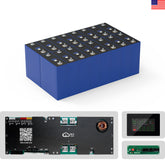

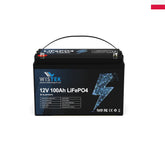
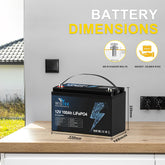

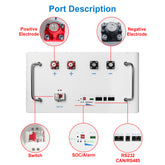
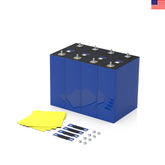
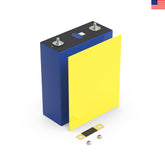
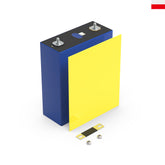


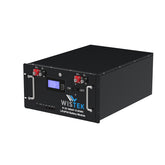
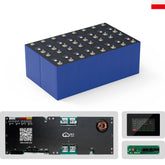








Leave a comment
All blog comments are checked prior to publishing